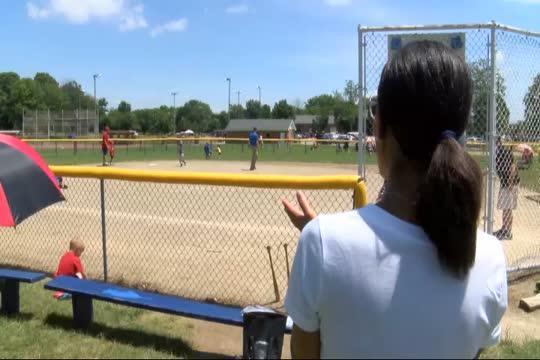The number of children with atopic dermatitis - eczema, a painful, itchy skin condition
- is on the rise. Some estimates are that one in five children in the U.S. now suffers from it and many children are prescribed powerful medications like immunosuppressants or topical steroids.
To help find simpler treatment options, researchers at National Jewish Health evaluated an approach known as wet wrap therapy. First described in 1987, wet wrap therapy has rarely been studied and has never been used as a standardized treatment for children with eczema.
The technique involves soaking in a bathtub of lukewarm water for about 20 minutes. After the child is removed from the tub, lotions or mild medicated ointments are quickly applied to inflamed areas of the skin while still damp. Then, the child is immediately dressed in wet clothing or wraps to seal in the moisture, followed by a layer of dry clothing. After two hours the clothing is removed.

The largest study ever conducted on wet wrap therapy shows it can dramatically improve skin conditions like atopic dermatitis and eczema. Experts at National Jewish Health in Denver saw a 71 percent improvement in symptoms without having to rely on traditional therapies like antibiotics, steroids or immunotherapy drugs. Credit: National Jewish Health
It seems like a fairly simple and straightforward approach, but a new study co-authored by Mark Boguniewicz, MD, a pediatric allergist and immunologist at National Jewish Health in Denver, Mary Kinnert, PhD, and Noreen Nicole, PhD, in the Journal of Allergy and Clinical Immunology shows it works. After being treated by health care teams at National Jewish Health, children who underwent in-patient therapy saw an average reduction in symptoms of 71 percent, they maintained healthy skin a month after returning home, and, perhaps most important, did so without relying solely on medications typically prescribed to these patients.
"We took a step up, step down sort of approach to managing their symptoms in this study," said Boguniewicz. "We would apply the wet wraps two to three times a day, depending on the severity of the case, then we would taper the therapy down and only treat the affected areas as time went on," said Boguniewicz. "Over roughly four days we saw dramatic improvements."
In all, 72 children took part in the study, the largest ever for wet wrap therapy, and for the first time their conditions were quantified for their severity using SCORAD (Scoring Atopic Dermatitis) and ADQ (AD Quickscore) measurements. The most severe cases were given a score of 50 and over, moderate cases were classified between 25-49 and mild cases were those that scored less than 25.
"When these children arrived their mean score was right around 50, so they were severe cases," said Boguniewicz. "When they left, their mean score was less than 15. That kind of improvement, in just a short amount of time, was very, very dramatic," he said.
Boguniewicz cautions that there is a technique that needs to be followed in order for wet wrap therapy to work. "You can't just try this on your own because overuse can do more harm than good," he said. "You first want to familiarize yourself with the concept at our website and talk to a specialist about it. We have a lot of material that can help you determine if this is the right approach for your child," he said.





Comments